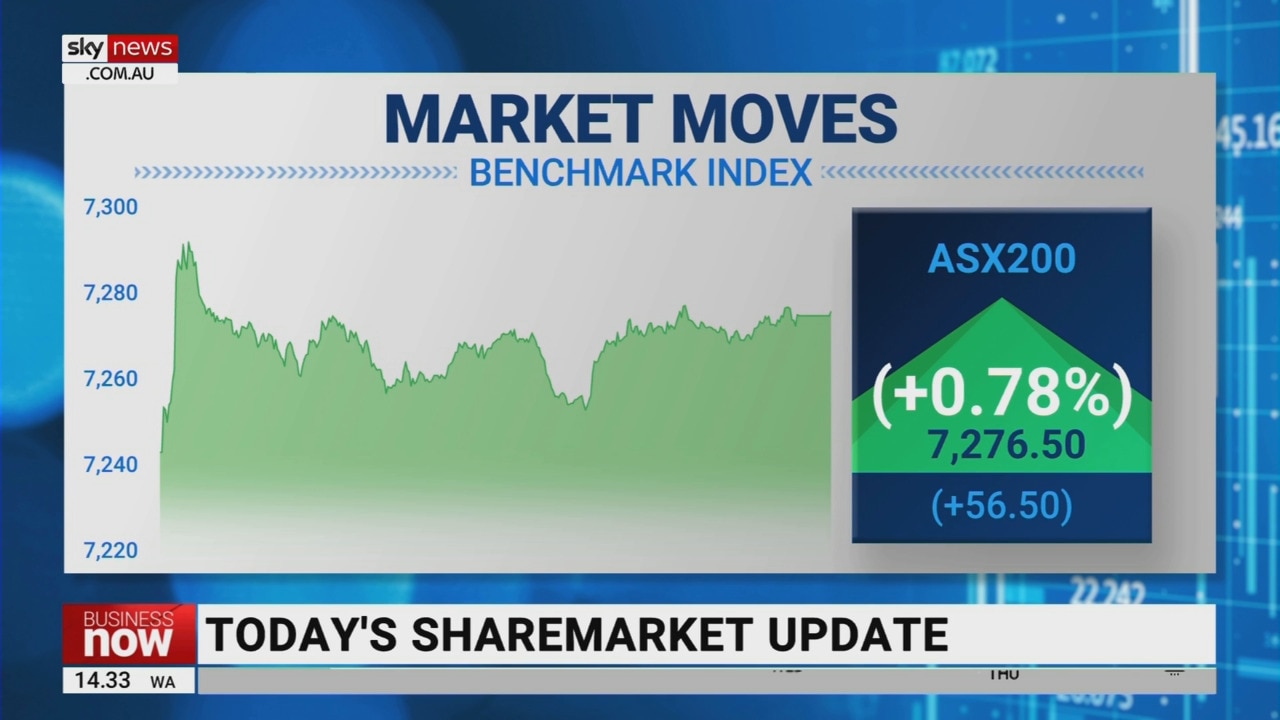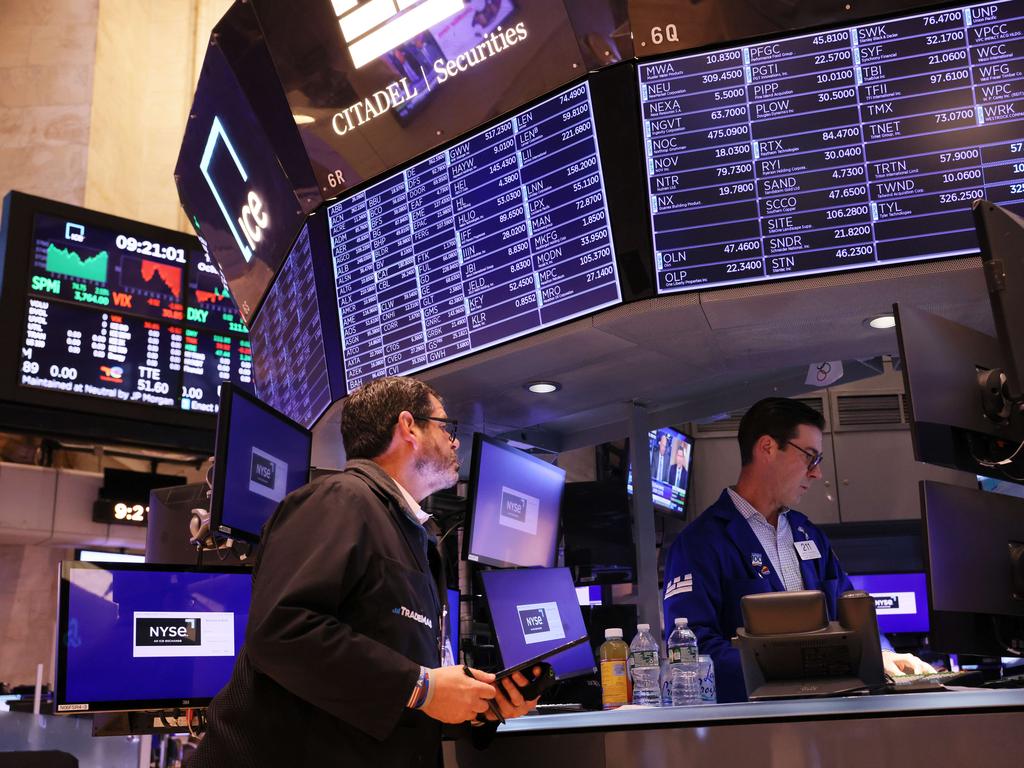Relief as earnings trend is better than feared
Corporate earnings forecasts are cooling as demand weakens after aggressive rate hikes, but it hasn’t been enough to worry the sharemarket after modest gains this year.

A much-heralded slump in corporate earnings is proving elusive despite recession fears.
Corporate earnings forecasts are coming down as demand begins to weaken after the most aggressive interest rate increases in more than three decades, but it hasn’t been enough to worry the sharemarket after modest gains this year.
The S&P/ASX 200 index fell about 1.5 per cent in this period, albeit driven by a pullback in the US sharemarket amid a flare-up in the US regional bank crisis. It is up 3.4 per cent in the year to date.
About a quarter of the top-200 ASX-listed companies have provided a market update or reported March quarter results amid “conference season” in the past two weeks.
The Australian companies for which consensus earnings estimates have been downgraded in this period have outnumbered upgrades by two to one, according to Goldman Sachs.
But sharemarket reactions to these trading updates have been positively skewed.
Surprisingly, the average share price move for companies providing updates on the day of their updates in this period has been an outperformance of 60 basis points versus the benchmark.
Despite the recent rise in recession fears, only a small number of stocks have seen a large move lower in their share price post update, notes Goldman Sachs Australia equity strategist Matt Ross.
“This implies that investors have generally been more cautious on the outlook for earnings than analysts have been,” he said. “So while companies might be underwhelming sell-side analysts, the broad earnings trend appears stronger than what the market has been expecting.”
Margin pressures have remained the key driver of earnings disappointment, with firms finding it harder to maintain profitability in a softer demand environment.
He says margin headwinds appear more of a problem for service-based firms at this point in the cycle, because while wages are playing catch-up, goods inflation continues to dissipate.
Moreover, stocks typically outperformed following updates in situations where consensus forecasts were already factoring in a significant down cycle in margins, with eight of nine retail or housing-related stocks that provided trading updates last week outperforming the ASX 200.
It comes as the latest NAB business survey shows conditions continued to ease from a high level and confidence remained below average despite a slight rise in April.
“Overall, we believe these recent trends continue to support our view that investors should be positioned in the more cyclical and value pockets of the market where valuations are discounting a significant earnings correction – one that based on current trends does not appear to be on the horizon here or elsewhere,” Goldman’s Mr Ross said.
Similarly, after analysing presentations at the 25th annual Macquarie Conference last week (at which more than 100 companies presented), Macquarie’s Australian equity strategist, Matthew Brooks, concluded that while domestic demand was weakening, many updates were less bad than feared.
“Despite the lowest unemployment rate in decades and high immigration in Australia, there are ongoing signs the consumer is slowing, especially in the areas that benefited most from the Covid-19 pandemic and where demand is impacted more by interest rates,” Mr Brooks said.
“Multiple companies talked to consumers trading down as household budgets come under pressure. As more fixed-rate mortgages roll off, and past rate hikes bite, the pressures on consumer spending is likely to increase. Travel is a bright spot as pent-up demand supports sales.”
While labour cost pressures were a theme of last year’s Macquarie conference, this appears to be normalising, with industrial and mining companies in particular seeing improving labour availability.
Health services appear to be one area where labour cost pressures are still more acute, but from a contrarian view health services are one of the last areas affected by the pandemic that can still see an earnings recovery, but it wasn’t the “downgrade conference” that some had feared.
Media stocks and Computershare disappointed, but Medibank Private, NIB, Flight Centre and Auckland Airport upgraded. Cleanaway strongly outperformed after maintaining guidance and noting improving labour availability and the potential for improving margins.
Residential real estate investment trusts saw improving operating trends after the Reserve Bank held fire in April. Mr Books said it remained to be seen how much the surprise RBA rise affected the nascent housing recovery in the short term, but for the longer term there was a bullish view on residential property given Australia’s strong immigration and the housing shortage.
“We believe the results of the 25th Australian conference are consistent with our cautious view on the business cycle,” Mr Brooks said. “We continue to think the US is headed for a recession later this year and that this will drive more volatility. Australia may avoid recession thanks to high immigration, but a US recession is still likely to impact Australian equities.”






